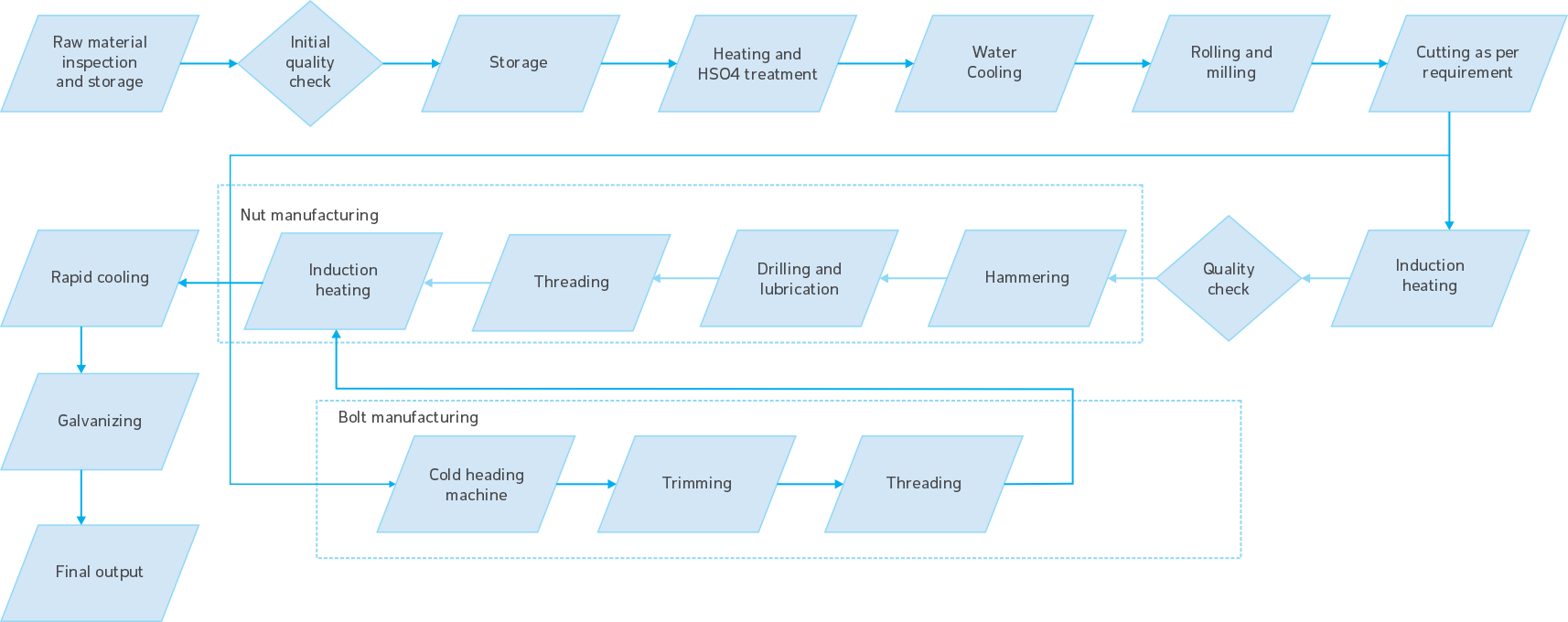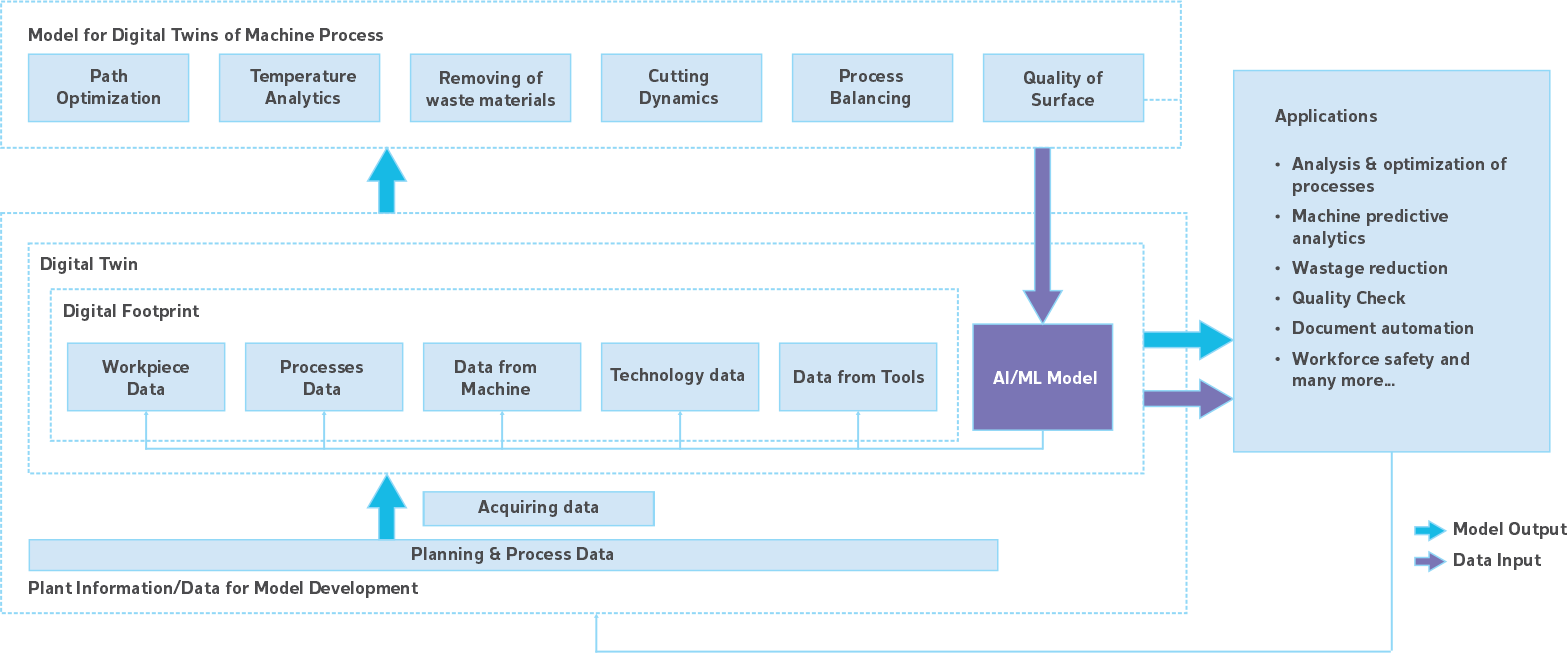As part of the Industry 4.0 revolution, businesses are embracing towards digital twins— a concept based on AI/ML and software analytics that relies on data which is generated using the internet of things (IoT). This emerging trend requires steady investment in IoT that has the potential to bridge the gap between the physical and the digital worlds, thus improving day-to-day business activities. The data gathered from IoT sensors, such as temperature, vibrations, and energy input, is relayed to processing systems for storage and analyzed using AI/ML for near real-time insight about the performance or profitability from physical assets. Higher the accuracy the system can achieve by duplicating physical objects, the more efficiency and other benefits can be obtained from it.
Digital Twins – Empowering Simulation Platforms
With rapid developments in AI/ML and edge computing, virtual models have become a key driver in modern engineering, fostering innovation and enhancing performance efficiency. According to IDC , 37% of IoT platform vendors plan to integrate simulation platforms, systems, and capabilities by the end of 2022 and more than 65% of manufacturers plans to conduct process simulations and scenario evaluations using a digital twin. With a greater availability of data, the simulations will soon become even more near real-time and dynamic in nature. Some of the major industries leading in simulation adoptions are manufacturing, automotive, retail, healthcare, disaster management, and, most importantly, smart city development.
Here are just a few examples of simulation platform usage:
- In the energy sector, it is being used to build digital models that guide drilling efforts in real-time.
- In health care, it is being used to create highly accurate digital twins of the human heart for clinical diagnoses, education, and training.
- In the automotive and aircraft sectors, it has become an essential tool for optimizing entire manufacturing value chains and innovating new products.
- In the area of smart-city management, it is being used for urban planning, maintenance, and disaster readiness projects.
Depending on the requirements, there are various types of digital twins that can be utilized:
This is a virtual representation of the individual components to study and analyze the physical, mechanical, and electrical characteristics of a part.
Product Digital Twin
When parts are brought together to develop product digital twin, it facilitates the analysis of the working of all parts together, conglomerating data, which is then visualized to produce valuable insights for optimizing the process.
System Digital Twin
Different products are combined to obtain a result at a system level. It offers visibility regarding the interaction of assets and suggests insights for the creation of newer and better business opportunities that optimize all involved processes.
Process Twin
Involves the creation of a virtual simulation of an entire production facility; the process twin ensures that all the systems are synchronized to operate efficiently and a delays in one system will not impact others and without altering existing workflows it will allow top management to monitor business metrics.
In this blog, we will explore the perspective of nut and bolt (fasteners) manufacturers regarding digital twins. Below is the nut and bolt manufacturing process flow diagram:

The Nut Manufacturing Process
- A nut is a piece of metal wire rod with a threaded hole used for fastening purposes; the quality of a nut depends upon the recommended composition of its raw metals.
- The basic manufacturing method is to apply force on the unheated metal, which flows into the dies to change its shape.
- Then, the cleaned and treated wire rod is connected to a forming machine (FM) for straightening. Subsequently, it goes to the cutting machine where the rod is clipped into the desired size for nut manufacturing.
- The clipped pieces go into an induction heater (up to 1200° C) and are then transferred to a hydraulic hammer mechanism to give them the most common hexagonal shape.
- The nuts are drilled and threaded by the drilling and threading machine simultaneously with a controlled lubricating mechanism to reduce wear and tear.
- Now, the finished nuts are sent to an oven (which is set at around 870°C) for approximately one hour; this portion of the process gives nuts their required strength.
- In the final step, they are rapidly cooled in an oil chamber for about 5 minutes and then sent to the galvanizing section.
The Bolt Manufacturing Process
- A bolt is a piece of metal rod, whose one end is settled up and other end is threaded. The same metal rod used for nut making can also be used in the bolt manufacturing process
- The process used for manufacturing bolts is a high-speed multi-blow press; in this process, the straight and treated wire rod is first cut into the required size.
- Next, the materials are sent to a cold heading machine— a high-speed multi-blow press used to make a hexagonal head at one end.
- There are a series of dyes in the heading machine, and the unheaded metal is forced to flow into the dies to change its shape.
- The material then goes to the trimming machine for cutting the edge of the bolt, and at last, the bolts are fed to the threading rolling machine for making dreads.
- The finished bolts are sent to the galvanizing unit; in each of those, process-controlled lubrication is used to minimize wear and tear as well as for cooling.
As explained above, there are certain types of challenges associated with the conventional manufacturing process, such as high amounts of waste, more downtime causing an increase in production time, high maintenance, high inventory, a tedious process, and safety issues.
Below is a high overview explanation of digital twins for the above process:

- When utilized in the above context in the nut and bolt manufacturing process, the entire assembly line is outfitted with various sensors related to vital areas of functionality and operability. These sensors produce data about different aspects of the physical object’s performance, such as output, running temperature, wastage rate, and much more. This data is then processed for further analysis.
- A digital environment is created by categorizing the information into five data categories: workpiece data, process data, machine tool data, tool data, and technical data (which is a prerequisite for the virtual process representation). Creating a digital model with utmost accuracy is consequential; it also needs to represent removed parts in-process metrics.
- The process models are of crucial importance for obtaining a digital twin. The acquired planning and process data, on the other hand, represents the input for the various process models and in mutual consideration. Analytical-physical models are used for the detailing of the machining process to provide better accuracy in terms of the physical environment.
- The factors include thermal stability, workpiece character, process configuration, cutting forces and dynamics, surface quality and vibrations induced by the machining process, etc.
- When the virtual model is used to run simulations, the analysis will be carried out and possible improvements will be ruled in, all with the objective of generating valuable insights — which can then be applied back to the original physical object. When these deviations are applied over a period of performance, it becomes noticeable for the management to take action and optimize their production processes.
Advantages of Digital Twins:
- Actionable insights, simulations, and a connected view of all online and offline data enable faster, better decisions to optimize performance and efficiency.
- It facilitates better visualization of data and analyzes dynamics across a project’s lifecycle with all historical data and real-time data in one place.
- It also offers predictive analytics with real-time sensor data; improvisation through machine learning and artificial intelligence, maintenance, and operations are significantly improved.
- Creating digital twins of complex assets, factories, and processes exponentially improves the value from operations, reduces development work, and decreases time to market.
The digital twin concept makes it possible to identify loopholes directly in the machining process, such as deviations from the planning specifications, and to instrumentalize targeted measures for quality assurance and optimization of the machining process. The very purpose is to increase the productivity or process stability; with further integration of methodologies, there is also the possibility of a predictive evaluation of the machining processes and the production system.
Digital twin has emerged as a big tech that includes parts, products, systems, and process twins. The lowest level, or the parts twin, is the simplest, with each subsequent level providing more sophisticated and more diverse types of information. Taking the lowest level parts and putting them back together can help in building a sophisticated yet comprehensible system. The potential uses for digital twins in almost every industry are poised to be endless.
To know more about the architecture pattern for the above areas, please feel free to contact us at [email protected]
Contributors


Get in touch with us for feasibility studies, joint workshops, pilots and ideation sessions.
Consultation Form”]


